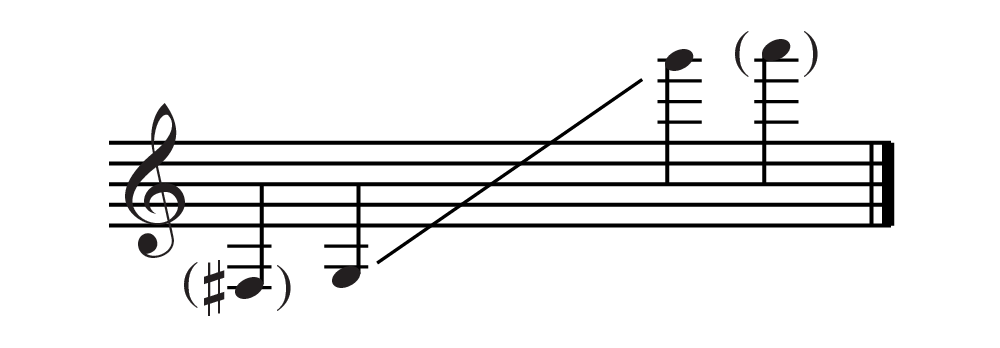Range

Range (written)

Range (sounding)
Notes in brackets are available on the small-bore Kingma System alto flute but may vary according to the instrument used and the player.
Range of the alto flute
This alto flute has a B (F#) footjoint. These are now made by several alto flute manufacturers (including Eva Kingma, Kotato and Fukushima, Sankyo and Pearl), but are still quite rare. It helps to stabilise the pitch and tone of the top register, but can make extreme high pitches more difficult. It also opens up the range of techniques slightly, and allows for the rich multiphonic available from overblowing the lowest note. However, the extra stretch for the right hand little finger can be tiring, so overuse of rapid movement in the extreme low register should be avoided.
Right hand little finger movement in the extreme low register
The upper range of the alto flute is variable according to a range of factors, including the bore size, the headjoint design and the skills of the individual player. b''' is safe on all instruments, but higher pitches can be difficult to achieve. The highest pitches are likely to have limited dynamic control, and use a large quantity of air, so cannot be sustained for long periods.
The alto flute is pitched in G, and therefore requires transposition. It is important to specify whether the written music is at concert pitch or in G, to avoid confusion. Is it not usual to expect the player to transpose a part at sight, as most alto flute players are primarily flute players, for whom transposition is not a part of every day life.